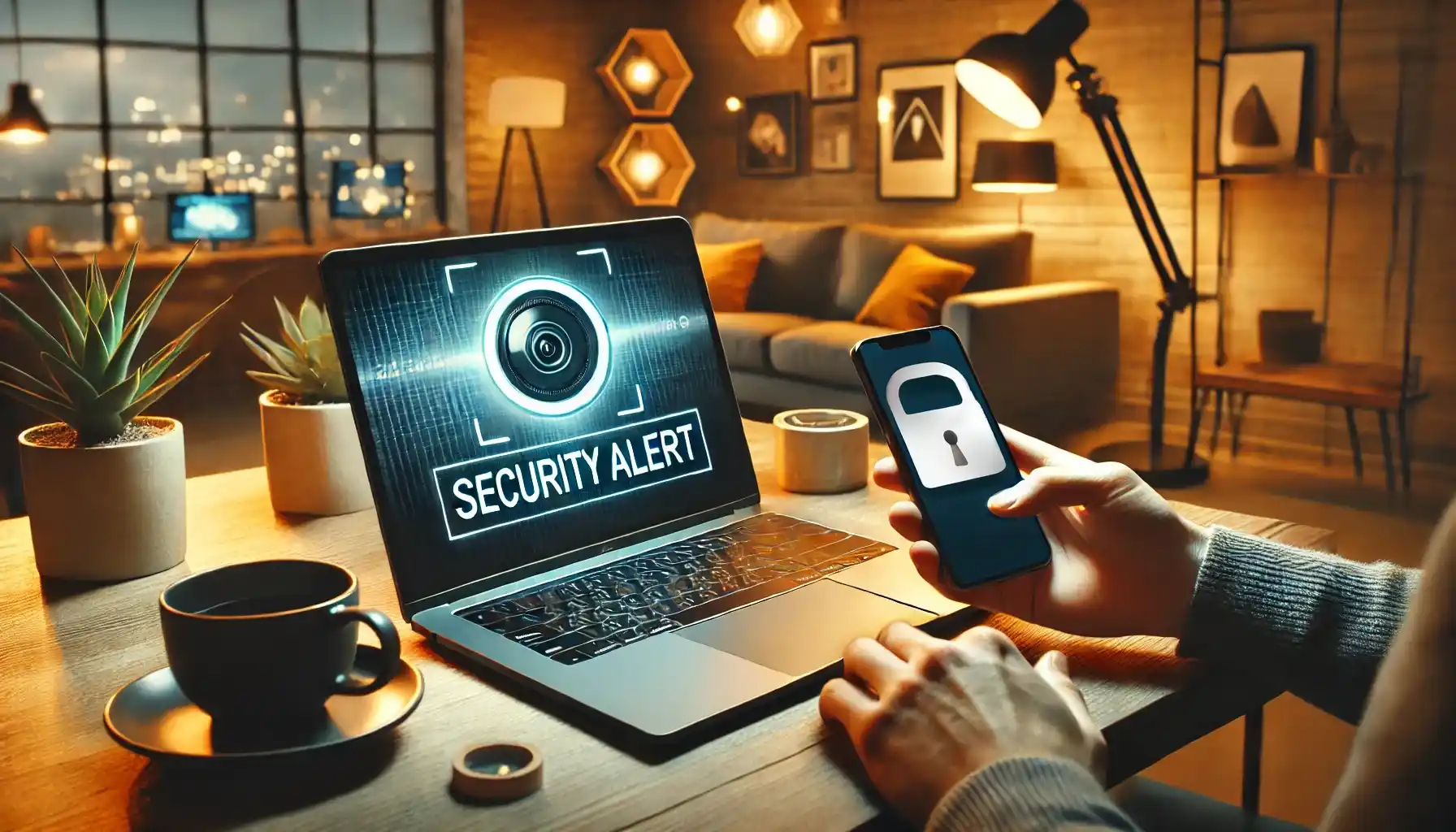When someone takes their first steps in coin collecting for beginners, the first and most important rule that a person learns is to always scrutinize the features, details of the coin and authenticate each piece. Fortunately for modern collectors, there is an application Coin ID Scanner, which quickly helps to find out all the basic information and all the nuances of the coin, to check its authenticity and even the degree of its rarity. But are there equally easy and convenient ways to check your devices and gadgets?
User tracking is no longer the stuff of sci-fi movies – now your smartphone knows where you were last night, your laptop remembers all your passwords, and your smart speaker listens to conversations even when it appears to be turned off. So, taking all the above, how to protect yourself? So, here we would like to break down which devices are at risk, exactly how attackers can spy on you, and what to do to protect your privacy.

Which Devices are at Risk of Surveillance and Why
Technological advances have made us more vulnerable: almost any digital device can be used for snooping, but which ones are most at risk?
Smartphones are the most vulnerable gadget. Today, we use it to communicate, work, bank, store personal data, and even as an electronic passport. But that’s what makes it the main target of attacks.
- The GPS module enables someone to track the owner’s movements in real time (even if geolocation is disabled, the smartphone can locate itself by cell towers).
- The camera and microphone can be activated remotely. Hackers use malware to record you without your knowledge.
- Messengers and social networks are collecting huge amounts of information. According to Facebook, the company processed more than 2.5 petabytes of user data every day in 2023.
Thus, in 2021, experts discovered that the Pegasus malware was able to infect iPhones using vulnerabilities in iMessage. It was enough just to receive a message – even without opening it!
By the way, tablets, laptops and PCs are not immune to cyber threats. Webcams and microphones can be hacked, and keyloggers (programs that record keystrokes) can record passwords and other sensitive information. Users are less likely to install antivirus on them and give less thought to privacy settings. But the devices are also used for banking, viewing personal photos, and even working with corporate data.
By the way, smart speakers, TVs, surveillance cameras, even home appliances with Wi-Fi are all potential surveillance tools. Their defenses are often weak, and users rarely update firmware.
Fact: In 2018, Amazon Echo users complained that their devices were self-sending call recordings to random contacts.
What About Snooping? Popular Hacking Methods
Modern technology makes snooping on users not only possible, but sometimes imperceptible. You can be sure that your smartphone is turned off and your laptop is in sleep mode, but that doesn’t mean you’re not being watched. Most users do not even realize that their data may be leaking into the network in real time – through cameras, microphones, GPS or compromised Wi-Fi networks. But how exactly can attackers gain access to your devices? In the table below you will see the main ways.
| Surveillance method | How does it work? | How to protect yourself? |
| Spyware | The malware records calls, messages, and location | Install antivirus, do not download programs from unverified sources |
| Keyloggers | The program records all keystrokes, steals passwords | Use on-screen keyboards to enter passwords, antivirus |
| Fake Wi-Fi Networks | Hacker creates an access point with a similar name and intercepts data | Do not connect to unknown networks, use a VPN |
| Camera and microphone hacking | Malware activates the camera and microphone without the owner’s knowledge. | Tape your webcam, turn off your microphone. |
| IMSI-catcher (mobile signal interceptor) | Disguises itself as a cell tower and intercepts calls and SMS. | Use messengers with encryption (Signal, Telegram) |
Protecting Your Devices: Detailed Recommendations
Now that we’ve figured out what methods attackers can use to gain access to your devices, it’s time to look at specific steps to help you protect your digital security. Even if you think you’re of no interest to hackers, the reality is this: absolutely anyone can fall victim to a cyberattack or covert surveillance. But the good news is that you can protect yourself from most threats if you follow sound cybersecurity principles.
- Set up Basic Security
The first step is to make sure your devices are protected at least at a basic level. First and foremost, make sure that all your devices – whether it’s a smartphone, tablet, laptop or smart gadgets – have up-to-date updates. Developers regularly patch vulnerabilities, and cybercriminals are actively looking for older versions of software through which they can gain access to your system.
Equally important is the strength of your passwords. Using “123456” or “password” is a direct path to hacking. According to statistics, about 81% of data breaches are due to weak or compromised passwords. That’s why you should use unique combinations of letters, numbers and symbols for each account and enable two-factor authentication (2FA).
Also carefully check which apps have access to your camera, microphone, contacts, and GPS. For example, why would a calculator need access to your location? In your smartphone settings, limit unnecessary permissions – this will reduce the risks of surveillance and data leakage.

- Protect Against Camera and Microphone Tampering
The built-in camera and microphone on your smartphone or laptop are potential surveillance points that can be exploited by malicious hackers. And here, the easiest way to protect yourself is to physically close the camera (even if the camera is inactive, there’s a chance that malware could turn it on without your knowledge). That’s why even celebrities like Mark Zuckerberg and former FBI Director James Comey cover their webcams with duct tape.
An additional layer of protection will be anti-virus software that can detect spyware and malicious scripts that record sound or images. For example, one famous Pegasus attack that exploited iOS and Android vulnerabilities allowed hackers to remotely activate the microphone and camera, intercepting conversations in real time.
- Hide Your Location
Geolocation is used everywhere, from maps and navigators to delivery services and social networks. But as well as convenience, it comes with risks: many apps collect data about your location even when you don’t realize it. If anonymity is important to you:
- Turn off GPS when you don’t need it.
- Use a VPN and anonymous browsers, such as Tor.
- In your smartphone settings, check which apps use your geolocation.
Additionally, it’s worth checking which apps have access to your geolocation. Many programs, including social networks and games, may use your coordinates unnecessarily. You can restrict access to each app separately in your smartphone’s permission settings.
- Protect Your Network Connection
Network connectivity is one of the most vulnerable channels for attacks, especially if you frequently connect to public Wi-Fi networks. According to Kaspersky Lab research, about 25% of public Wi-Fi hotspots do not use any encryption, which means that attackers can intercept transmitted data, including passwords and bank details.
What do you need to do to keep yourself safe? Avoid unsecured Wi-Fi networks in public places – cafes, airports, shopping centers. If a connection is unavoidable, use a VPN to encrypt your data.
At home, set a strong Wi-Fi password, enable MAC filtering and disable WPS to prevent hacking. And for added protection, activate a firewall and regularly update your router’s firmware to address possible vulnerabilities.
Be Invisible to Uninvited Guests
The world of technology is changing rapidly, but one thing remains the same – your privacy is in your hands. Remember that the more careful you are taking care of your data, the harder it is for hackers to infiltrate your digital life. Stay one step ahead and let only your social media followers, not hackers, watch you.
